Sulfur Dioxide
Does Pollution Discriminate? The Coal Plant Edition
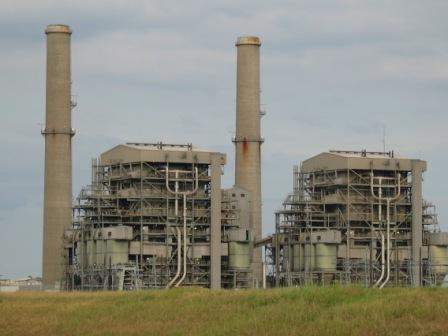 A new NAACP report examining the locations and impacts of all 378 coal-fired power plants in America found that those living near the plants were disproportionately poor and members of minority groups. More often than not, the worst-performing coal plants were also in predominately poor and minority communities.
A new NAACP report examining the locations and impacts of all 378 coal-fired power plants in America found that those living near the plants were disproportionately poor and members of minority groups. More often than not, the worst-performing coal plants were also in predominately poor and minority communities.
"Coal Blooded: Putting Profits Before People" failed 75 plants on their environmental justice impacts and found those same plants were responsible for a heavier pollution burden. 14% of sulfur dioxide emissions and 13% of all smog-forming nitrogen oxide emissions from all U.S. power plants came from just those 75 power plants.
The four million people living near those 75 plants are among the poorest and more isolated communities of color. The average per capita income within three miles of the 75 failing plants is $17,500, and nearly 53 percent of the people are minorities.
One of those 75 failing plants is in Texas according to the report's graphics, but the plants aren't listed by state in the Appendix. All coal fired plants in the immediate DFW region have been closed for a while based on their advancing age and voluminous pollution, but that may not be the case in places like San Antonio or Austin. Stay tuned for a clarification.
Hell Freezes Over: Why the New Federal Report on Midlothian Matters
Everything in italics and "quotation marks" below is a direct quote from the latest chapter of the ATSDR's (Agency for Disease Registry and Toxic Substances) "health consultation" on the impact of certain kinds of industrial air pollution on the local population.
You should take five minutes to glance over the sentences. They've taken a better part of a decade and a great deal of citizen persistence to make it to print. You can read them now only because of a petition to ATSDR by local Midlothian residents, spearheaded by Sal and Grace Mier in 2005, prompted the Agency to get involved.
They're also rarer than hen's teeth. Because the words actually come together in sentences to conclude human health was likely harmed by the pollution from Midlothian's three cement plants and steel mill, as well as recommend decreasing that pollution.
Among grassroots activists, ATSDR has a notorious reputation for issuing reports that are "inconclusive by design." The joke is that the agency never met a facility it couldn't learn to live with. And sure enough, previous chapters in this saga have disappointed. Just two years ago, ASTDR's shoddy work in investigating health impacts in Midlothian and elsewhere across the country was the subject of a Congressional hearing.
These ATSDR reports generate no new data. Instead, they are retrospective looks back at the available sampling/monitoring information and a piecing together of possible exposure paths and levels. As such, they're only as good as the data they can digest. In Midlothian's case, that means they're completely dependent on state monitoring – criticized by citizens for years as being inadequate. Nevertheless, with this latest report, citizens have been somewhat vindicated because of what even that inferior sampling revealed.
The health impacts described in this latest report are also limited to what are called "Criteria Pollutants" – old school substances like lead, soot, sulfur dioxide, and ozone that have been regulated by the Clean Air Act for decades. They do not apply to more exotic kinds of air pollution like endocrine disruptors, which there's little or no monitoring for at all.
So there are a lot of missing pieces, but the ATSDR's conclusions and recommendations have an impact on your lungs and maybe your own local fight, even if you don't have a Midlothian zip code. For the first time a federal agency known to avoid coming to any conclusion about anything was forced to say that human health was adversely affected by the operations of industry in Midlothian.
There's a public meeting on this report on December 6th from 7 to 8:30 pm at the Midlothian Conference Center.
Health Consultation/Assessing the Public Health Implications of the Criteria (NAAQS) Air Pollutants and Hydrogen Sulfide MIDLOTHIAN AREA AIR QUALITY MIDLOTHIAN, ELLIS COUNTY, TEXAS
NOVEMBER 16, 2012 U.S. DEPARTMENT OF HEALTH AND HUMAN SERVICES
Agency for Toxic Substances and Disease Registry
Division of Community Health Investigations
Recommendations:
"Texas Commission on Environmental Quality (TCEQ) should take actions to reduce future SO2 emissions from TXI to prevent harmful exposures."
"TCEQ should take actions to reduce future PM2.5 emissions from TXI and Gerdau to prevent harmful exposures."
"TCEQ should continue efforts to reduce regional ozone exposures."
"TCEQ should insure that levels of these air pollutants do not increase to levels of concern in the future."
"TCEQ should conduct ambient air monitoring to characterize exposures to persons located downwind of the Ash Grove and Holcim facilities and take actions to reduce SO2 emissions from these facilities if harmful exposures are indicated."
"TCEQ should conduct appropriate ambient air monitoring to characterize exposures to persons located downwind of the Ash Grove and Holcim facilities and take actions to reduce PM2.5 emissions from these facilities if harmful exposures are indicated. In addition, particulate matter monitoring is needed in residential areas that are in immediate proximity to the facilities’ limestone quarries."
"In ATSDR’s judgment, one notable gap in monitor placement is the lack of monitoring data for residential neighborhoods in immediate proximity to the four industrial facilities, where fugitive emissions (those not accounted for in stack emissions) likely have the greatest air quality impacts."
Human health was likely harmed, and is still threatened by industrial pollution from Midlothian
From Sulfur Dioxide:
"Breathing air contaminated with sulfur dioxide (downwind of TXI's cement plant and the Ameristeel steel mill) for short periods could have harmed the health of sensitive individuals.…ATSDR cannot determine if harmful exposures to SO2 have been occurring downwind of the Holcim and Ash Grove facilities."
"All 24-hour values in Midlothian were lower than EPA’s former standard. However, the World Health Organization’s health comparable guideline is 8 ppb (WHO, 2006). This value was exceeded at both the Midlothian Tower and Old Fort Worth Road stations in most years of monitoring through 2008…"
"Overall, in the years 1999 to 2001, Old Fort Worth Road (monitoring site north of TXI) ranked among the stations with the highest 24-hour average sulfur dioxide concentrations in the state. As sulfur dioxide emissions from TXI Operations decreased in following years, so did the measured concentrations at this station."
From Particulate Matter, or Soot:
"Public health concern is warranted for adverse health effects from long-term exposure to PM 2.5 in Cement Valley"
"In the past (1996–2008), annual average PM 2.5 levels measured were just below the range of concentration proposed by EPA for lowering the annual average standard…Moreover, many of the annual average PM 2.5 concentrations were above the more conservative WHO health guideline (10 μg/m3)."
"No PM 2.5 monitoring data are available to evaluate exposures downwind of the Ash Grove facility. Furthermore, although annual average PM2.5 levels detected at the Holcim monitor indicate possible harmful levels…."
"We estimated that annual average PM2.5 levels in the vicinity of the Gerdau Ameristeel monitor, from 1996 to 1998, could have ranged from about 22.6 to 26.4 μg/m3, which is above both the current and proposed EPA standard. Using EPA’s approach, the 3-year average level might have been above the NAAQS standard of 15 μg/m3 for these years in the vicinity of the Gerdau Ameristeel monitor. Applying this same approach to annual average PM10 data from other monitors suggests that PM 2.5 levels could have been close to the current and proposed PM2.5 standard, especially for the Wyatt Road, Old Fort Worth Road, Gorman Road, and Midlothian Tower monitors."
"Consistent with the other pollutants discussed earlier, the estimated annual PM 2.5 emissions listed for these facilities are among the highest for Ellis County and also rank high among industrial sources statewide."
From Lead:
"Past lead air exposures during the period 1993 to 1998, in a localized area just north of the Gerdau Ameristeel fence line, could have harmed the health of children who resided or frequently played in this area….In the mid-1990s, the lead levels measured in this area ranked among the highest lead concentrations measured statewide."
From Smog:
"Scientific studies indicate that breathing air containing ozone at concentrations similar to those detected in Midlothian can reduce lung function and increase respiratory symptoms, thereby aggravating asthma or other respiratory conditions. Ozone exposure also has been associated with increased susceptibility to respiratory infections, medication use by persons with asthma, doctor’s visits, and emergency department and hospital admissions for individuals with respiratory disease. Ozone exposure also might contribute to premature death, especially in people with heart and lung disease. School absenteeism and cardiac-related effects may occur, and persons with asthma might experience greater and more serious responses to ozone that last longer than responses among people without asthma."
"The Midlothian Tower site recorded ozone concentrations above the level of the NAAQS for several years (TCEQ, 2011b), and the Old Fort Worth Road site has been measuring ozone concentrations close to the level of the NAAQS. Based on the data from both monitors, from August 1997 to September 2011, the 8-hour EPA ozone standard has been exceeded 236 times."
From Breathing Multiple Pollutants:
"ATSDR believes that sufficient information exists to warrant concern for multiple air pollutant exposures to sensitive individuals, especially in the past….The ability of the scientific community to fully and quantitatively evaluate the health effects from the mixture of air pollutants people are exposed to is at least ten years away (Mauderly et al., 2010)……The current state of the science limits our ability to make definitive conclusions on the significance of simultaneous exposures to multiple criteria air pollutants. ATSDR’s conclusions are based on our best professional judgment related to our understanding of the possible harmful effects of air pollutant exposures in Midlothian and our interpretation of the current scientific literature; therefore, these conclusions are presented with some uncertainty."
From New Production:
"Reductions in SO2 levels in Cement Valley have occurred since late 2008 resulting in exposures to both sensitive individuals and the general public that are not expected to be harmful. These reductions may be caused, in part, by declining production levels at local industrial facilities. Future harmful exposures in Cement Valley could occur if production rises to at least previous levels and actions are not taken to reduce SO2 emissions."
Regulatory "Safe Levels" Very Often Aren't
"Past SO2 exposures were not above the Environmental Protection Agency (EPA) standard in place at that time but were above the current standard."
"Past lead air exposures were not above the EPA standard at that time but were above the current standard.…The scientific community now believes that the current standard (15 μg/m3) for fine PM (measured by PM2.5) is a better indicator of possible long-term health effects from PM exposures than was the former EPA annual average standard for PM10 (EPA, 2006b)."
Even a Few Weeks of Cleaner Air Can Make A Big Difference
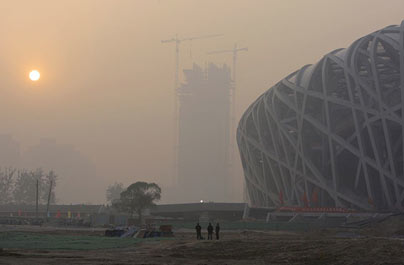 We can't tell you how many times a resident from DFW will go on a business trip or vacation to a less-polluted place and report an almost instant shedding of the ill effects of dirty air, only to have an almost equally fast re-acquaintance with those effects once they return. Could air pollution really make that much of a difference in so little a period of time?
We can't tell you how many times a resident from DFW will go on a business trip or vacation to a less-polluted place and report an almost instant shedding of the ill effects of dirty air, only to have an almost equally fast re-acquaintance with those effects once they return. Could air pollution really make that much of a difference in so little a period of time?
As it turns out, yes.
Via an new study recently published in the Journal of the American Medical Association, researchers found that the Chinese government's decision to close down Beijing's polluting factories and take cars off the road during the 2008 Olympics resulted in a remarkable short-term improvement in cardiovascular health. It's the first major study to look at the immediate effects of air pollution in young healthy adults.
In a synopsis published by Environmental Health News, one of the authors describes the study and its importance:
"For the 5-month study from June to November, the researchers recruited 125 resident doctors with an average age of 24 from a centrally located hospital. Half were male, and all were healthy with no history of diabetes or cardiovascular disease.
The researchers measured heart rate, blood pressure and six markers of cardiovascular diseases in blood samples before, during and after the games. The markers included C-reactive protein (CRP), fibrinogen, von Willebrand factor, soluble CD40 ligand, soluble P-selectin concentrations and white blood cell count (WBC).
Two markers associated with blood clotting significantly decreased from pre-Olympic to the during-Olympic period: P-selectin levels dropped by 34 percent and von Willebrand factor levels were reduced by 13 percent. After the games, when the pollution control measures were removed, most markers rose back to pregame levels. But two markers – P-selectin and systolic blood pressure – worsened and showed a significant increase compared to the levels during the games.
Air pollution emissions were also measured at similar times. Levels of most air pollutants during the games decreased up to 60 percent compared to their pregame levels, depending on the type of pollutants. For example PM2.5 dropped 27 percent, nitrogen dioxide 43 percent and sulphur dioxide 60 percent. After the games when pollution controls were removed, emissions rose to higher levels than were measured before the games started.
This study suggests that even young healthy people can benefit from short-term air pollution reduction and supports efforts to quantify and understand the benefits and costs of air pollution control measures."
The next time a politician complains about the cost of air pollution controls, make sure and ask them if they're for preventative heart disease treatment. When they say yes, please remind them that keeping crap out of our air that would otherwise end up in our lungs is such preventative care.
Nation’s Only Public Hearing on Roll Back of Cement Plant Rules Scheduled for Aug 16th in DFW
 Environmentalists are angry at EPA for giving the public less than two weeks notice prior to the nation's only hearing on a rollback of new air pollution rules for cement plants that the agency says could save thousands of lives annually, including many in DFW.
Environmentalists are angry at EPA for giving the public less than two weeks notice prior to the nation's only hearing on a rollback of new air pollution rules for cement plants that the agency says could save thousands of lives annually, including many in DFW.
One of those who came in 2009, and vowed to show up again on the 16th was Ft. Worth resident Margaret DeMoss, who was instrumental in getting her city to adopt a "green cement" policy to reduce pollution from obsolete Midlothian cement kilns in southern DFW.
She also noted that in 2009, when the rules were being proposed, there were three national hearings coast to coast. Now that the rules are being weakened, there's only one.
"It's outrageous that the EPA would schedule this hearing at the last minute and in only one location in the nation; lot of other regions suffer downwind from cement kilns. Who will speak for them?"
Downwinders at Risk and other community groups repeatedly sued to get them enforced. That effort resulted in 2010 emission rules that were hailed as the largest single advance in air quality for the US cement industry, and were universally supported by citizens living near and around the nation's cement plants.
They had already passed all necessary regulatory review, just overcome their last legal hurdle, and were on their way to President Obama for his signature and implementation by 2013 when they got yanked by the administration's Office of Management and Budget earlier this year.
When the rules re-emerged, their enforcement was pushed back to 2015 and their strict Particulate Matter pollution provisions were considerably weakened.
According to EPA's own health impact studies for the rules, that two-year delay will cause at least 2000-5000 premature deaths nationwide.
Despite a halt in the burning of hazardous wastes at local cement plants in 2010, MIdlothian remains the home of the largest concentration of cement manufacturing in the entire U.S.
Three large cement plants – TXI, Holcim, and Ash Grove – are still the largest point sources of air pollution in North Texas, generating thousands of tons of air pollution.
Since DFW is downwind of Midlothian, Metroplex residents are exposed to more cement plant pollution than any other metropolitan area in the country, and represent a disproportional number of these 2-5000 annual deaths that EPA estimates will occur because of its rules delay.
"If these revisions are adopted, DFW residents will be paying a high price for the Administration's retreat," said Schermbeck. "That's why we must make our objections heard now."
He urged those that want to speak at the August 16th hearing to reserve a five-minute slot with EPA coordinator Pam Garrett by e-mailing her at garrett.pamela@epa.gov or calling (919) 541-7966
The ‘long, sordid history’ of Texas’ most brazen polluter
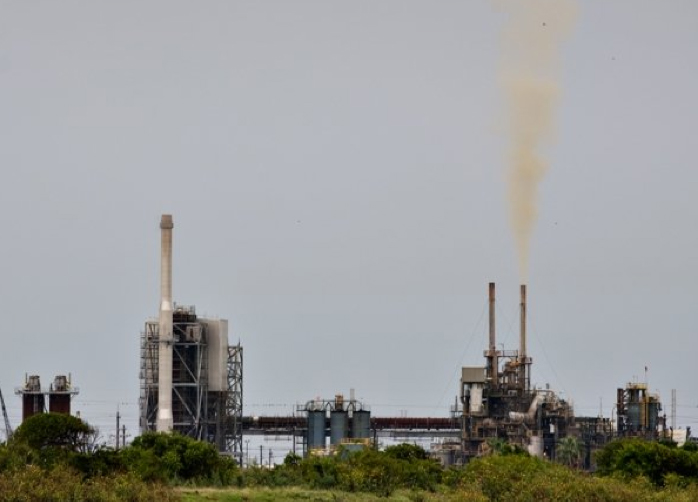 …is Gulf Chemical & Metallurgical Corporation, a "recycling" operation in Freeport on the coast where magma-spewing smokestacks are just business as usual. As chronicled by the Texas Observer's Forrest Wilder, it's also a case study on why the Texas Commission on Environmental Quality is an inadequate enforcer of the law. Not for the faint of heart or folks who think the government is already too tough on polluters.
…is Gulf Chemical & Metallurgical Corporation, a "recycling" operation in Freeport on the coast where magma-spewing smokestacks are just business as usual. As chronicled by the Texas Observer's Forrest Wilder, it's also a case study on why the Texas Commission on Environmental Quality is an inadequate enforcer of the law. Not for the faint of heart or folks who think the government is already too tough on polluters.
The Next Big Dallas Environmental Fight? Garbage Burning
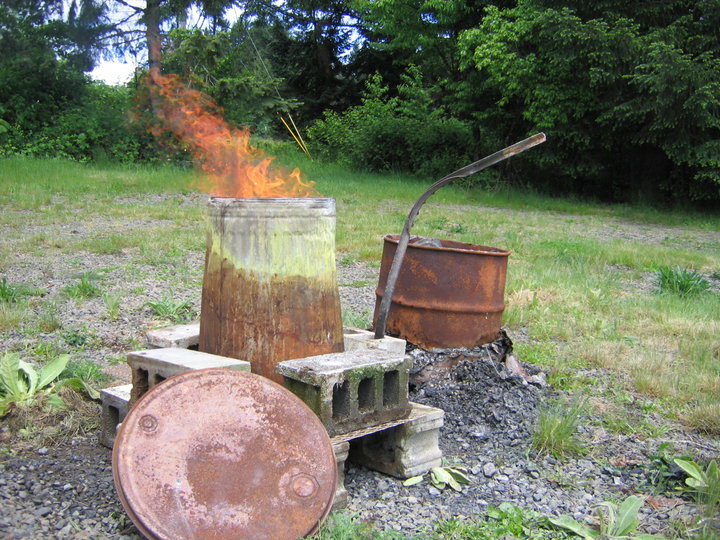 Many folks in the DFW environmental community think the battle over "flow control" at the McCommas Bluff landfill in Dallas is merely a prelude the the bigger goal of locating a large "materials recovery" operation there that will include a waste-to-energy power plant that can generate cash for City Hall as well as electricity. Once confined to the land-starved East Coast and Midwest, garbage burning is coming to Texas under the cover of recycling schemes that want to use it to make a buck instead of paying a landfill to take it.
Many folks in the DFW environmental community think the battle over "flow control" at the McCommas Bluff landfill in Dallas is merely a prelude the the bigger goal of locating a large "materials recovery" operation there that will include a waste-to-energy power plant that can generate cash for City Hall as well as electricity. Once confined to the land-starved East Coast and Midwest, garbage burning is coming to Texas under the cover of recycling schemes that want to use it to make a buck instead of paying a landfill to take it.
A wave of garbage-burning permits have been approved across the country over the last 2-3 years at various cement plants, including the TXI kiln in Midlothian, south of Dallas, which can now burn plastic wastes and the non-steel parts of cars, including brake linings, electronic switches, vinyl covers, mats, and dashboards. Now the groundwork is being put in place to extend that practice into municipal garbage burning using power plants.
The sale pitch sounds great. The waste companies and city will be "completely committed" to recycling and reusing as much waste as possible. They'll only burn a "small percentage of leftover waste" that would otherwise go to a landfill. It has "significant BTU value" and it "reduces pollution" when you burn it! Why bury it when you can use it to make power that people need. It's really just like recycling!
Except it isn't. It's garbage burning. It's burning plastics. It's burning "fibers." It's burning teated lumber. It's burning "a small list of alternative fuels" and when there's not a enough of that stuff to generate the required power, the list expands. And it produces more air pollution, and distributes that air pollution over a much larger area, affecting many more people, than the same amount of garbage continuing to go to a landfill.
The 20-year fight over burning hazardous wastes at TXI and the other Midlothian cement plants began with the companies telling residents that they were "recycling flammable liquids" in kilns that reached almost 2000 degrees, and burned up 99.99% of all the waste. Soon, the cement kilns were mixing in non-flammable solids like toxic metals, and wastes with chlorine, and contaminated water that had little or no BTU value at all. And far from removing 99.99% of the bad stuff, the kilns added a toxic soup of chemicals to their already voluminous amounts of air pollution.
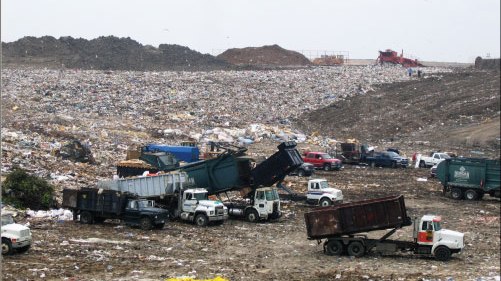 A landfill's toxic plume is usually slow-moving, flows only downhill, and can be tracked as it goes through soil. An incinerator's plume is blowing toxic air pollution wherever the wind is blowing, traveling as far the the wind will carry it, and changes from day to day, often eluding monitors if they're not in exactly the right place. Then, after all that, there's the problem of what to do with all the toxic ash. Send it to a landfill. Which practice puts more people in harm's way? Which one affects public health more? Which is the more sustainable alternative?
A landfill's toxic plume is usually slow-moving, flows only downhill, and can be tracked as it goes through soil. An incinerator's plume is blowing toxic air pollution wherever the wind is blowing, traveling as far the the wind will carry it, and changes from day to day, often eluding monitors if they're not in exactly the right place. Then, after all that, there's the problem of what to do with all the toxic ash. Send it to a landfill. Which practice puts more people in harm's way? Which one affects public health more? Which is the more sustainable alternative?
As a means of getting tuned up for the fight ahead, which some rumors put as near as this fall or winter, let's examine a little study partially sponsored by the American Chemical Council that was published the other day with the intent of setting the stage for widespread garbage, sorry, "refuse" burning.
It comes from UT – where another study on energy just got a lot of unfavorable publicity. This time It's Dr. Michael Webber who's Associate Director of the Center for International Energy and Environmental Policy in the Jackson School of Geosciences, Co-Director of the Clean Energy Incubator at the Austin Technology Incubator, Fellow of the Strauss Center for International Security and Law at the LBJ School of Public Affairs, and Assistant Professor of Mechanical Engineering at the University of Texas at Austin. Whew.
He's also a member of the "Pecan Street Project" in Austin, which is a "citywide, multi-institutional effort in Austin to create the electricity and water utilities of the future by the innovation and implementation of smart grids, smart meters, and smart appliances. The Pecan Street Project team includes UT, the City of Austin, Austin Energy, the Environmental Defense Fund, the Austin Technology Incubator, and eleven corporate partners."
See? Already the guy has impeccable credentials.
And what is Dr. Webber and the American Chemical council selling today?
"If 5% of residual waste from recycling facilities were diverted to energy recovery, it would generate enough power for around 700,000 American homes annually."
First, you understand that Dallas alone has more than 700,000 homes, and so we're talking about burning 5% of the entire nation's leftovers to get electrical energy for a city smaller than Dallas…for a year.
Second, does anyone know how many waste incinerators would have to be built and and what cost, or how they'd be financed? Nope. But we digress….
"The study found that while single-stream recycling has helped divert millions of tons of waste from landfills in the U.S. – where recycling rates for municipal solid waste are currently over 30% – Material Recycling Facilities (MRFs) currently landfill between 5% and 15% of total processed of the material treated as residue.
According to the researchers this residue is primarily composed of high energy content non-recycled plastics and fibre.
The report proposed that one possible end-of-life solution for these energy dense materials is to process the residue into Solid Recovered Fuel (SRF) that can be used as an alternative energy source capable of replacing or supplementing fuel sources such as coal, natural gas, petroleum coke, or biomass in many industrial and power production processes."
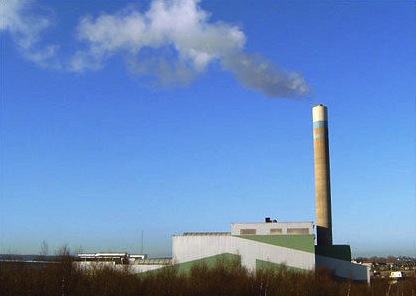 You will be unsurprised to learn that a cement kiln was involved in "testing" how well the
You will be unsurprised to learn that a cement kiln was involved in "testing" how well the garbage, sorry, SRF burned. Because it can reach temperatures of almost 2000 degrees!
But the results are not exactly spectacular in the way the Chemical Council probably anticipated.
Sulfur Dioxide (Sox) pollution was reportedly reduced over what coal alone would have emitted by some 20 to 44% (the study rounds this number up to "roughly 50%"). OK. but that's what SOx "scrubbers" are for. The study doesn't say whether the kiln used for the experiment had scrubbers on it. Not a lot of them do right now, but most power plants do and any new power plant or cement kiln would have to have them as well. Both the TXI and Holcim dry kilns have scrubbers already, and the new Ash Grove dry kiln will as well. These scrubbers can reduce SOx pollution by over 80%. So can we agree that we're better off just adding scrubbers to facilities instead of setting fire to plastic garbage to reduce this kind of air pollution?
On the other hand Nitrogen Oxide (NOx) pollution reportedly went up 25% to as much as 93%, when garbage was burned compared to coal. This spike was explained away by saying the kiln didn't have a proper delivery system for the garbage to reach the kiln. That's untested speculation by the authors that may or may not be true. Any increase in smog-forming NOx pollution would be hard to sell in an area like DFW that's been in violation of federal smog standards for over 20 years.
CO2 emissions were reportedly reduced by a paltry 1.5% – the equivalent to getting a million cars off the road! But that's another small number when you realize that just treating the CO2 from the three Midlothian cement plants here in North Texas would get you that number or something even bigger.
When you burn plastic you get dioxins – one of the most toxic substances in the world. The Chemical Council knows this. But there was no testing for dioxins, or phthalates, or any of the more exotic kinds of air pollution one would expect to see when you burn plastics and other kinds of garbage. This is one of the primary objections citizens would have about this practice, and yet there was no testing for it.
These results may not seem that great to you, but they impressed both the Chemical Council and Dr. Webber.
"In this case, one person's trash truly is another person's treasure. Americans send tons of waste to landfills each and every day, meaning that one of America's most abundant and affordable sources of energy ends up buried in landfills," commented Cal Dooley, president and CEO of ACC.
"It's time we got smart and made energy recovery a central part of America's energy strategy," he added.
Meanwhile Dr. Webber added: "The findings from our study demonstrate how engineered fuels can make a meaningful contribution to our nation's strategy while reducing carbon and sulfur emissions compared to some forms of energy,"
Let's translate: "Your trash is our potential treasure. We can't portray ourselves as "Green" if we don't find some way to make plastics more eco-friendly. Plus, we can make a buck packaging our garbage for you to burn it. Our findings show that under these very controlled circumstances, and with not too many questions asked, burning garbage can make some minimal pollution reductions that other readily available alternatives could make better, while also increasing the kind of pollution that most people don't want."
This fight over garbage burning will be as big, if not bigger than the fight over gas drilling. It will involve environmental justice issues, toxic pollution, private-public contracts, sustainability, and real recycling vs the fake kind. And lots and lots of doublespeak. Get your waders on.
Another Day, Another White House Retreat on Clean Air
 In an election year, apparently no environmental initiative is safe from the Obama White House.
In an election year, apparently no environmental initiative is safe from the Obama White House.
You may have missed this because it was one of those late Friday government announcments that officials like to use to bury bad news, but the EPA is going to consider softening those much-ballyhooed coal plant Mercury emissions rules that it fought so hard to get only last year. And because "consider" in this case means "we're going to do it," you can add these rules to the growing list of those clean air efforts in this supposedly environmentally-friendly administration that have bitten the dust because of political interfernce.
One of the reasons this rule is being rewritten is to satisfy the less-than-state-of-the-art White Stallion coal and pet coke-fired power plant being proposed for Matgorda Bay, whose owners have campaigned against the new rules since Day One. They say the rules are too strict and can't be met, despite being based on the track record of top performers in the utility industry. You will be unsurprised to learn that the Texas Commission on Environmental Quality is a co-facilitator in that campaign, up to the point of being so enthusiastic in its unquestioned support that it had to be ordered by a state judge to reconsider the first air permit it gave the plant because of the lack of any public participation.
White Stallion is going to be built less than 20 miles from the boundary of the eight-county Houston "non-attainment area" for ozone, or smog. Regulations on new sources of industrail pollution are tighter inside such areas than outside. That's pretty much all you need to know about the owner's commitment to using best technology. It's the same problem DFW used to face with the Midlothian cement plants and Ellis County until Donwiwnders petitioned, and EPA agreed, to include them in the North Texas non-attainment area.
Anything that makes it harder for Houston to meet clean air standards, also makes it harder for DFW to do the same. But this rollback is also a shame because of this administration's gap between promise and performance when it comes to critical upgrades in national polluiton standards – ozone, particulate matter, cement kilns and now coal plants. When push comes to shove, there seemingly isn't any polluter this White House won't do a favor for between now and November.
Wise County in, Hood Left Out: EPA Declares New Non-Attainment Area for Smog in North Texas
 At around closing time came news that the EPA had finalized the boundaries of the new “non-attainment area” for smog in North Texas that corresponds to enforcement of the “new” 75 ppb ozone standard approved last year. The 9 counties that were already in violation of the older standard are still there: Collin, Dallas, Denton, Ellis, Johnson, Kaufman, Parker, Rockwall, and Tarrant. The only new addition is Wise County, but it’s a huge one given its prodigious amount of gas industry pollution and commuter traffic to Tarrant and Denton Counties. It also means that Wise County will be getting an ozone monitor. If it’s placed correctly by TCEQ – and that’s a big if – it could be giving us a much truer understanding of how high or low ozone levels are really going. Since predominant winds during “ozone season” (April -November) are from the southeast to northwest, much of DFW’s dirty air gets pushed into Wise County, where it then officially falls off the map because there’s no air monitors there to record it. TCEQ likes it that way because ozone readings in Wise – where DFW dirty air meets gas patch emissions – could be significantly higher than in most of the rest of DFW. And that would dampen the Austin happy talk about improving DFW air quality. Also coming to Wise are things like those Vapor Recovery units on gasoline pumps, and other stricter pollution control requirements – although the impact on the entrenched gas industry infrastructure already there is unclear. Hood County was also singled out by EPA for inclusion in the non-attainment area but is left off this final order. It also has a number of gas industry facilities, including compressor stations, although most have shown up over the last ten years as opposed to Wise, which has seen decades of oil and gas production. There was no explanation for Hood exclusion in EPA’s letter. DFW wil be classified as a “Moderate” non-attainment area under the new standard while Houston will get a more severe “Marginal” classification. Why? Because the EPA uses a formula based on percentage above the new standard and Houston has traditionally had higher readings – think Ship Channel “upsets” and belches, even if DFW had just as many. Dallas and Houston remain Texas’ only non-attainmenta areas for smog, although that could certainly change over time. Next up is EPA’s determination of the compliance timeline for all non-attainment areas. The good news is that DFW’s deadline should be sooner than Houston’s because it’s not as severely ranked. The worse the air, the more time a region has to clean it up. The bad news is that it could still mean officials don’t have to get serious about cleaner air until around 2015 for a 2017-18 deadline. That”s been the pattern up to now – keep waiting until the last minute to think about how to dig yourself out of a multi-decade deep hole. And believe us, with this process, 2 years is “the last minute.” There could be all kinds of useful planning and researching going on right now but they’ll be none of that. Because insuring receipt of federal highway dollars, not protecting public health, has been the primary motivating factor behind the clean air machinery in North Texas. Until those priorities are reversed and clean air is sought for its own worth, we’re likely to always be behind the curve, chasing “unattainable” smog standards.
At around closing time came news that the EPA had finalized the boundaries of the new “non-attainment area” for smog in North Texas that corresponds to enforcement of the “new” 75 ppb ozone standard approved last year. The 9 counties that were already in violation of the older standard are still there: Collin, Dallas, Denton, Ellis, Johnson, Kaufman, Parker, Rockwall, and Tarrant. The only new addition is Wise County, but it’s a huge one given its prodigious amount of gas industry pollution and commuter traffic to Tarrant and Denton Counties. It also means that Wise County will be getting an ozone monitor. If it’s placed correctly by TCEQ – and that’s a big if – it could be giving us a much truer understanding of how high or low ozone levels are really going. Since predominant winds during “ozone season” (April -November) are from the southeast to northwest, much of DFW’s dirty air gets pushed into Wise County, where it then officially falls off the map because there’s no air monitors there to record it. TCEQ likes it that way because ozone readings in Wise – where DFW dirty air meets gas patch emissions – could be significantly higher than in most of the rest of DFW. And that would dampen the Austin happy talk about improving DFW air quality. Also coming to Wise are things like those Vapor Recovery units on gasoline pumps, and other stricter pollution control requirements – although the impact on the entrenched gas industry infrastructure already there is unclear. Hood County was also singled out by EPA for inclusion in the non-attainment area but is left off this final order. It also has a number of gas industry facilities, including compressor stations, although most have shown up over the last ten years as opposed to Wise, which has seen decades of oil and gas production. There was no explanation for Hood exclusion in EPA’s letter. DFW wil be classified as a “Moderate” non-attainment area under the new standard while Houston will get a more severe “Marginal” classification. Why? Because the EPA uses a formula based on percentage above the new standard and Houston has traditionally had higher readings – think Ship Channel “upsets” and belches, even if DFW had just as many. Dallas and Houston remain Texas’ only non-attainmenta areas for smog, although that could certainly change over time. Next up is EPA’s determination of the compliance timeline for all non-attainment areas. The good news is that DFW’s deadline should be sooner than Houston’s because it’s not as severely ranked. The worse the air, the more time a region has to clean it up. The bad news is that it could still mean officials don’t have to get serious about cleaner air until around 2015 for a 2017-18 deadline. That”s been the pattern up to now – keep waiting until the last minute to think about how to dig yourself out of a multi-decade deep hole. And believe us, with this process, 2 years is “the last minute.” There could be all kinds of useful planning and researching going on right now but they’ll be none of that. Because insuring receipt of federal highway dollars, not protecting public health, has been the primary motivating factor behind the clean air machinery in North Texas. Until those priorities are reversed and clean air is sought for its own worth, we’re likely to always be behind the curve, chasing “unattainable” smog standards.
